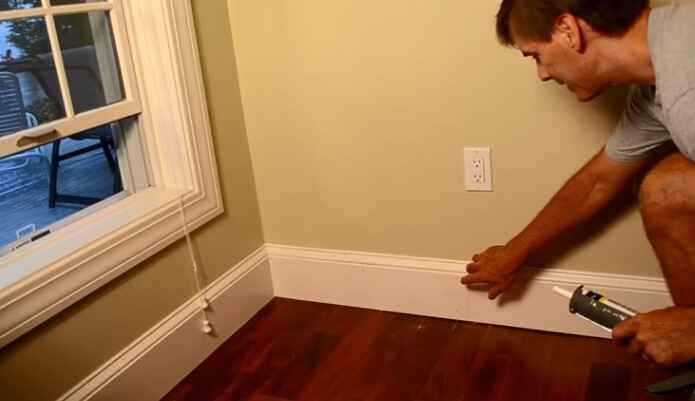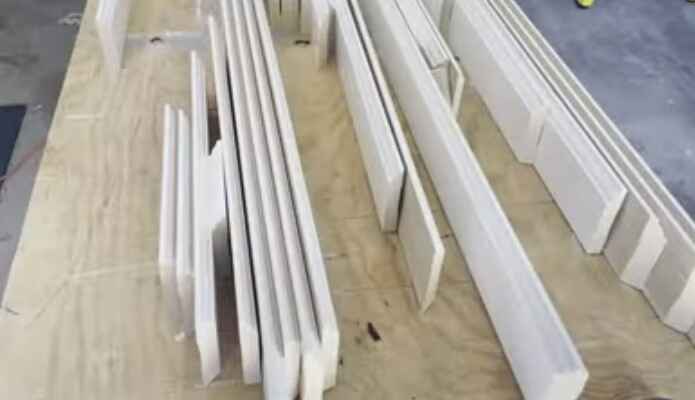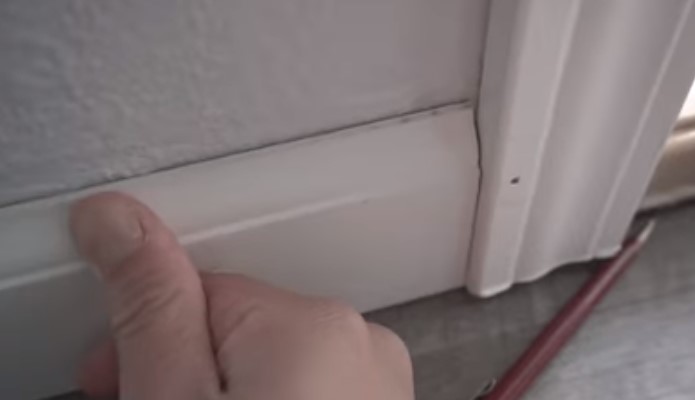Yes, you can often reuse baseboards if they are in good condition. Carefully remove them without causing damage, clean, and reinstall. Repainting or refinishing may be necessary for a refreshed look.
Discovering the potential of reusing baseboards can be a game-changer in both home improvement and sustainability. In this blog post, we delve into the common question: Can You Reuse Baseboards? From cost-effective renovation tips to eco-friendly design choices, we explore the possibilities and benefits of repurposing baseboards. Join us on a journey to redefine interior aesthetics while minimizing waste and maximizing resourcefulness. Let's explore how these often overlooked elements can bring new life to your living space.

Reusing baseboards is a great way to save money and time when remodeling or renovating a home. Here are seven factors to consider when reusing baseboards:
1. Cleanliness:
It is important to thoroughly clean the existing baseboard before reusing it. Remove dirt, grime, or dust with a vacuum cleaner and a damp cloth. Be sure to check for any signs of water damage or mold growth.
2. Structural Integrity:
Check that the existing baseboard remains structurally sound and undamaged by looking for cracks, holes, or warping in the boards. It's also important to ensure that the screws, nails, and other fasteners used to secure the baseboards are not loose or rusted.
3. Dimensions:
Measure the existing baseboard before reusing it. Ensure that the board remains the same size for a uniform look and fit within your space. Consider whether trimming down any sections of the baseboard will be necessary if you plan on placing them in smaller spaces.
4. Painting/Finishing:
Evaluate whether any painting or finishing is needed before reusing the existing baseboard. Make sure to use paint that is suitable for wood surfaces, as well as a sealant or other protective coatings if desired. Investigate sanding options to achieve a smooth finish.
5. Materials:
Review the type of materials used for the existing baseboard. Wood is a popular choice, as it can be painted, stained, and easily sealed. However, other materials like fiberboard or metal may also offer different benefits.
6. Compatibility:
Check that the existing baseboard will work well with your current design plans. Consider any other home décor elements that could interfere if you reuse the baseboards in their current form. Assess whether alternative styles or colors would suit your overall design scheme better.
7. Budget:
Reusing existing baseboards can save you money compared to purchasing new boards; however, you should also consider the time and labor involved in the process. Consider any professional help or additional supplies that may be required to complete the task.
How to reuse baseboards?
Using baseboards is a great way to save time and money for your next home renovation project. Here are seven easy steps for how to reuse baseboards:
1. Preparation:
Make sure the wall surface is clean and free from blemishes before you begin. Inspect the existing baseboard for any damage, such as warping or splitting. If necessary, use sandpaper to smooth out rough edges or cracks.
2. Measure Twice:
Take precise measurements of the length and height of the existing baseboard before removing it from the wall. Getting the exact measurements to reuse it in another room is important.
3. Removal:
Carefully remove the existing baseboard from the wall using a hammer and pry bar. Make sure not to cause any damage to the wall or existing trim work when taking off the baseboard.
4. Cleaning:
Give your baseboards a thorough cleaning before reinstalling them. Use a vacuum cleaner with an upholstery attachment and wipe the surface with warm, soapy water for the best results.
5. Sanding:
If necessary, you may need to sand down your baseboard before reusing it. This will help smooth out rough edges and any other imperfections that may have been caused during removal.
6. Reinstalling:
When it is time to reinstall the baseboard, use a level and miter saw to ensure proper installation. Ensure the trim is flush with the wall before you nail or screw it.
7. Finishing Touches:
Once installed, caulk any gaps between the baseboard and wall, as well as around corners, for a perfect finish. You can also paint or stain your baseboards to give them a fresh look!

Pros of Reusing Baseboards
The reuse of baseboards provides many benefits. Here are five advantages to consider:
1. Cost-Effective
Reusing existing baseboard materials is cost-effective for any home remodel or renovation project. It eliminates the expense of purchasing new materials and allows homeowners to save money on labor costs associated with installation. Furthermore, it can help reduce landfill waste from discarded building materials.
2. Durability
Baseboards that have been previously installed and well-maintained are often very durable and long lasting compared to newer materials which may not withstand wear and tear as effectively over time. This makes reusing an ideal choice when considering the durability of a renovation or remodeling project.
3. Versatility
Baseboards are a versatile element of many home designs and can easily be adapted for different uses in various rooms. Reusing the existing baseboard materials allows homeowners to preserve their preferred styles, colors, and textures without buying new items. This is especially beneficial with older homes that may have rare or unavailable materials on the market today.
4. Easy maintenance
Reused baseboards require minimal maintenance compared to newly installed ones, which will need more frequent attention to maintain their original appearance. Aside from regular dusting, most reused baseboard materials should only need occasional application of polish or wax to keep them looking new for years.
5. Environmentally Friendly
Reusing existing baseboards helps conserve natural resources and reduce the environmental impact of materials production. This makes it an ideal choice for anyone looking to make their home more environmentally friendly and sustainable. Reusing also has the benefit of reducing carbon dioxide emissions associated with transporting new building materials.

Cons of Reusing Baseboards
Reusing baseboards has its drawbacks.
A. May Not Match the New Design
Baseboards that match an older design may not be suitable for a new interior decorating project. Even if the color of the trim is similar, it may clash with different paint shades and furniture designs. To achieve a unified look in a room, it is important to have all elements work together harmoniously.
B. May Be Damaged or Worn Out
Even if the baseboard was originally in good condition when first installed, it could become damaged or worn out from everyday use and need replacing over time. It could also contain hidden problems such as loose nails or warped sections not visible until removed.
C. May Require Repairs or Replacements
If the baseboard is reused, it will likely need some repairs and refinishing to look good again. This may require sanding, painting, filling gaps, and replacing broken pieces with new ones. This could add up to high extra cost and time compared to buying fresh baseboards.
While reusing baseboards can be economical, its drawbacks should be carefully considered before deciding.
Conclusion
In conclusion, whether or not you can reuse baseboards ultimately depends on their condition and the type of renovation you're undertaking. The baseboards can be salvaged and reused if they are still in good condition and fit the new design aesthetic. However, if they are damaged, don't match the new design, or you're changing the room's layout, it may be best to replace them with new ones.
When considering whether to reuse baseboards, it's essential to assess their cost-effectiveness. While reusing baseboards may save you money in the short term, it may be more expensive in the long run if the baseboards need to be repaired or replaced soon after.
Ultimately, the decision to reuse or replace baseboards should be made case-by-case. It's always a good idea to consult with a professional contractor or interior designer to ensure you make the best decision for your home renovation project.